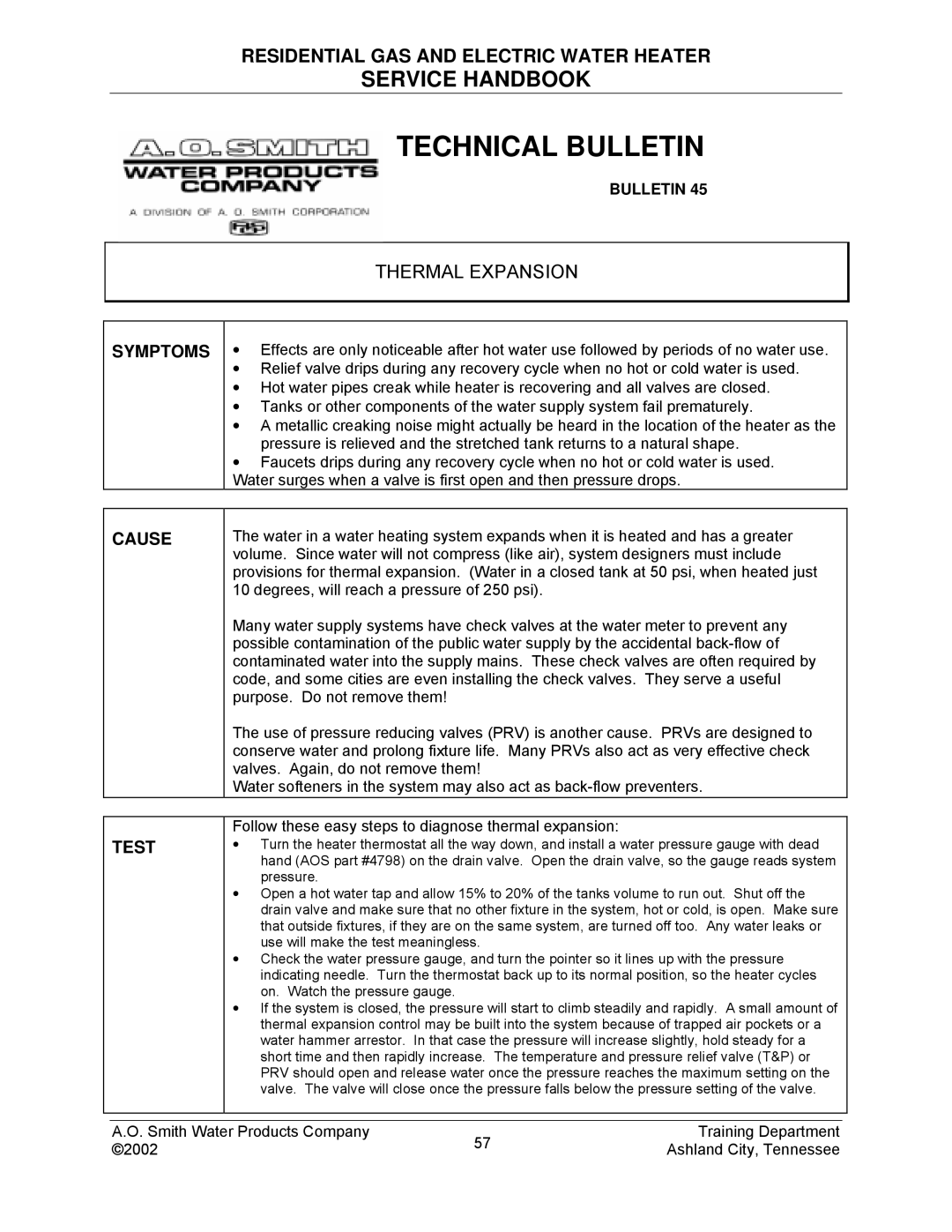TC-049-R2 specifications
The A.O. Smith TC-049-R2 is a highly efficient and reliable water heater designed to meet the needs of both residential and light commercial applications. This gas-fired water heater offers a perfect blend of performance, efficiency, and durability, making it a popular choice among homeowners and business owners alike.One of the standout features of the A.O. Smith TC-049-R2 is its tankless design. Unlike traditional water heaters with storage tanks, the TC-049-R2 heats water on demand, which means you only use energy when you need hot water. This not only results in lower energy bills but also provides an endless supply of hot water, ideal for households with multiple bathrooms or high hot water demands.
The TC-049-R2 is powered by natural gas, which enhances its efficiency and operating costs. With an impressive energy factor, this water heater is designed to conserve energy without compromising on performance. The unit also boasts a high recovery rate, which means it can quickly replenish hot water, ensuring you’re never left waiting.
Another notable technology in the A.O. Smith TC-049-R2 is its advanced electronic ignition system, which provides reliable start-up and reduces the chance of pilot light issues. Additionally, the unit features a scaled-down footprint, making it suitable for installation in tighter spaces, such as closets or utility rooms, without sacrificing performance.
Durability is a key characteristic of the TC-049-R2, as it is constructed with high-quality materials designed to resist corrosion and withstand typical wear and tear. The unit is equipped with a durable heat exchanger that enhances both efficiency and longevity, ensuring many years of reliable service.
Safety features are also prioritized in the A.O. Smith TC-049-R2. It comes equipped with advanced safety controls that prevent overheating and ensure safe operation. This offers peace of mind for users, knowing that the unit has multiple safeguards in place.
Overall, the A.O. Smith TC-049-R2 is an excellent choice for those seeking an efficient, reliable, and safe water heating solution. Its combination of advanced features, innovative technology, and robust construction makes it a leader in the water heater market, providing convenience and comfort to its users for years to come.

